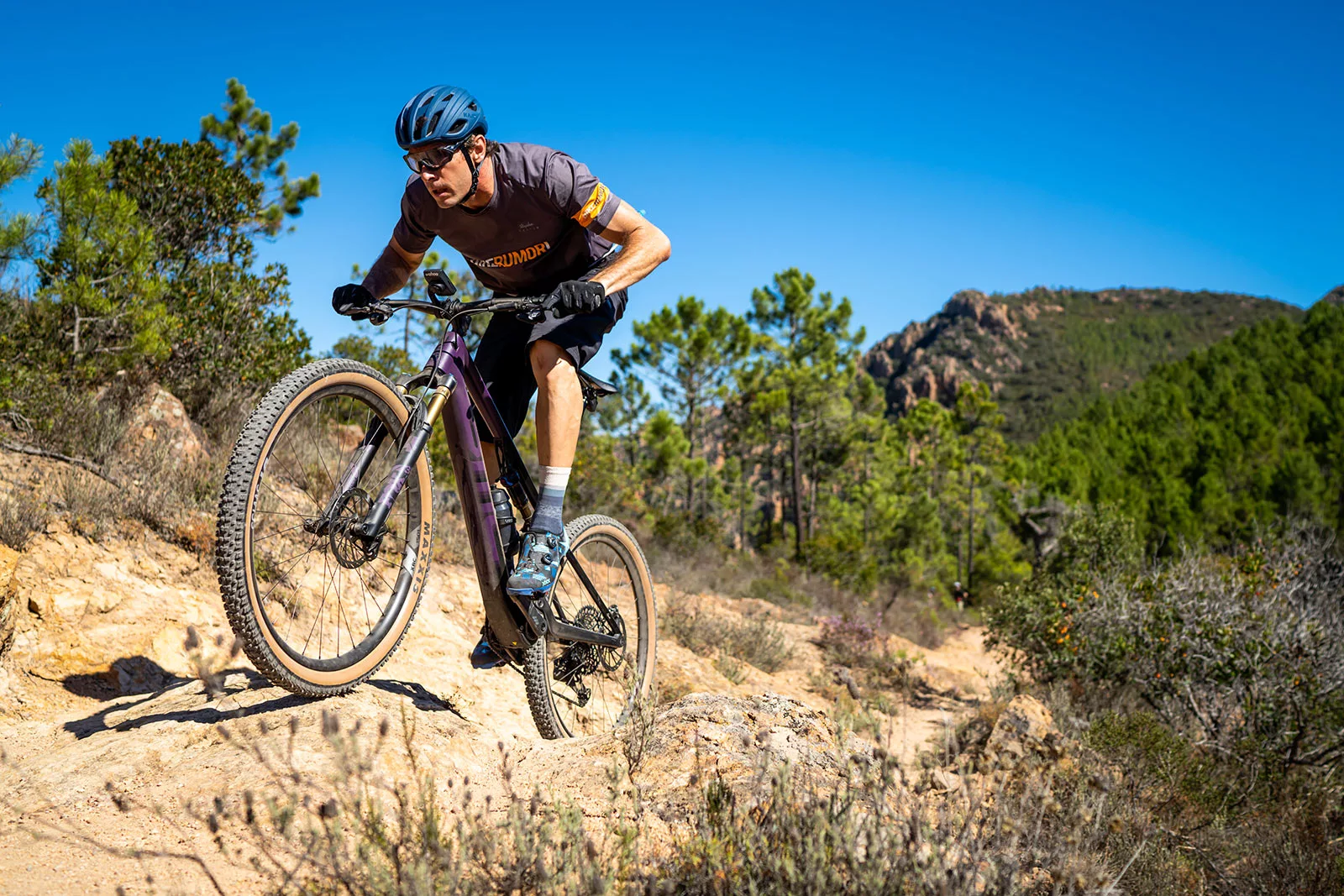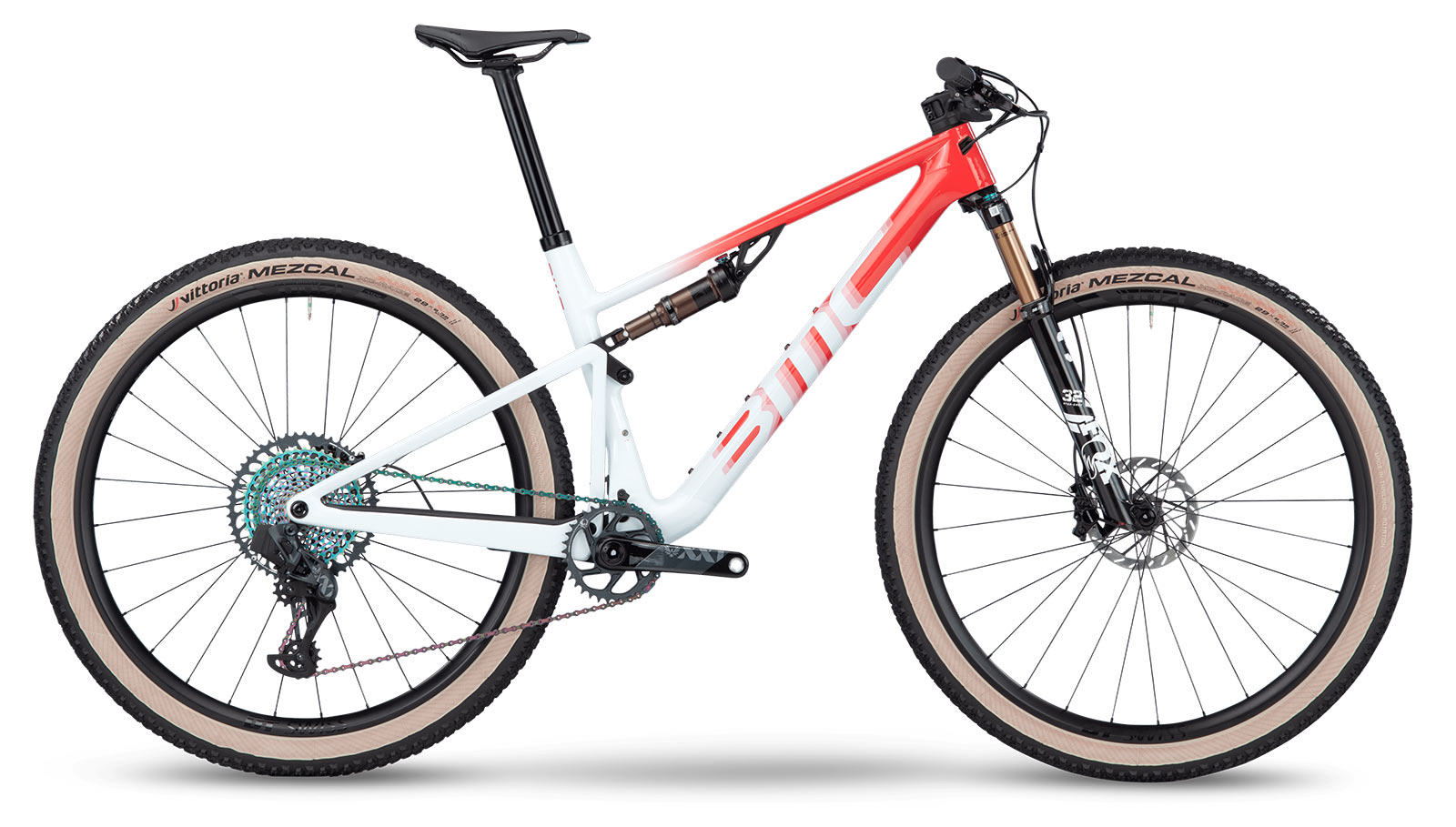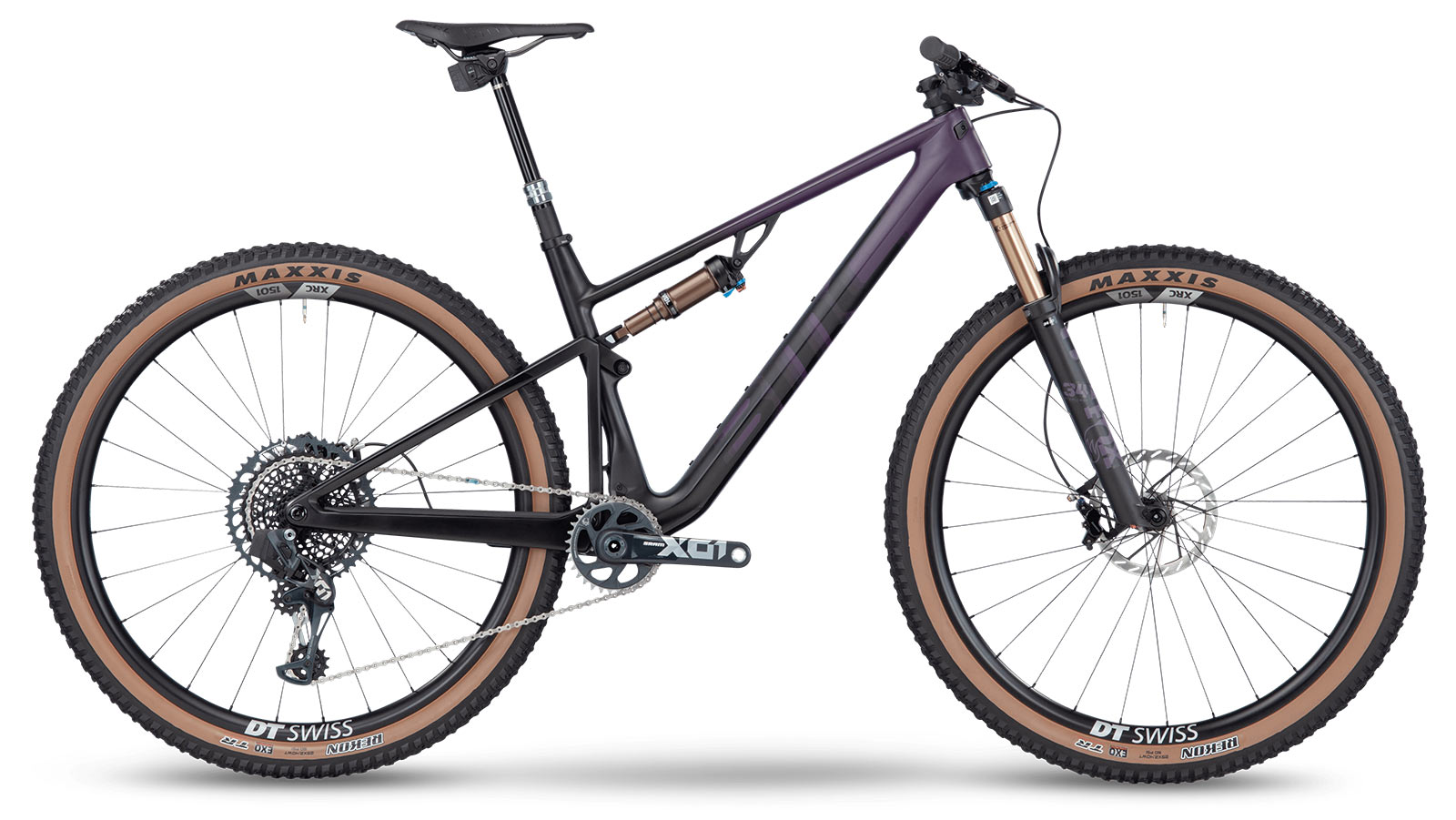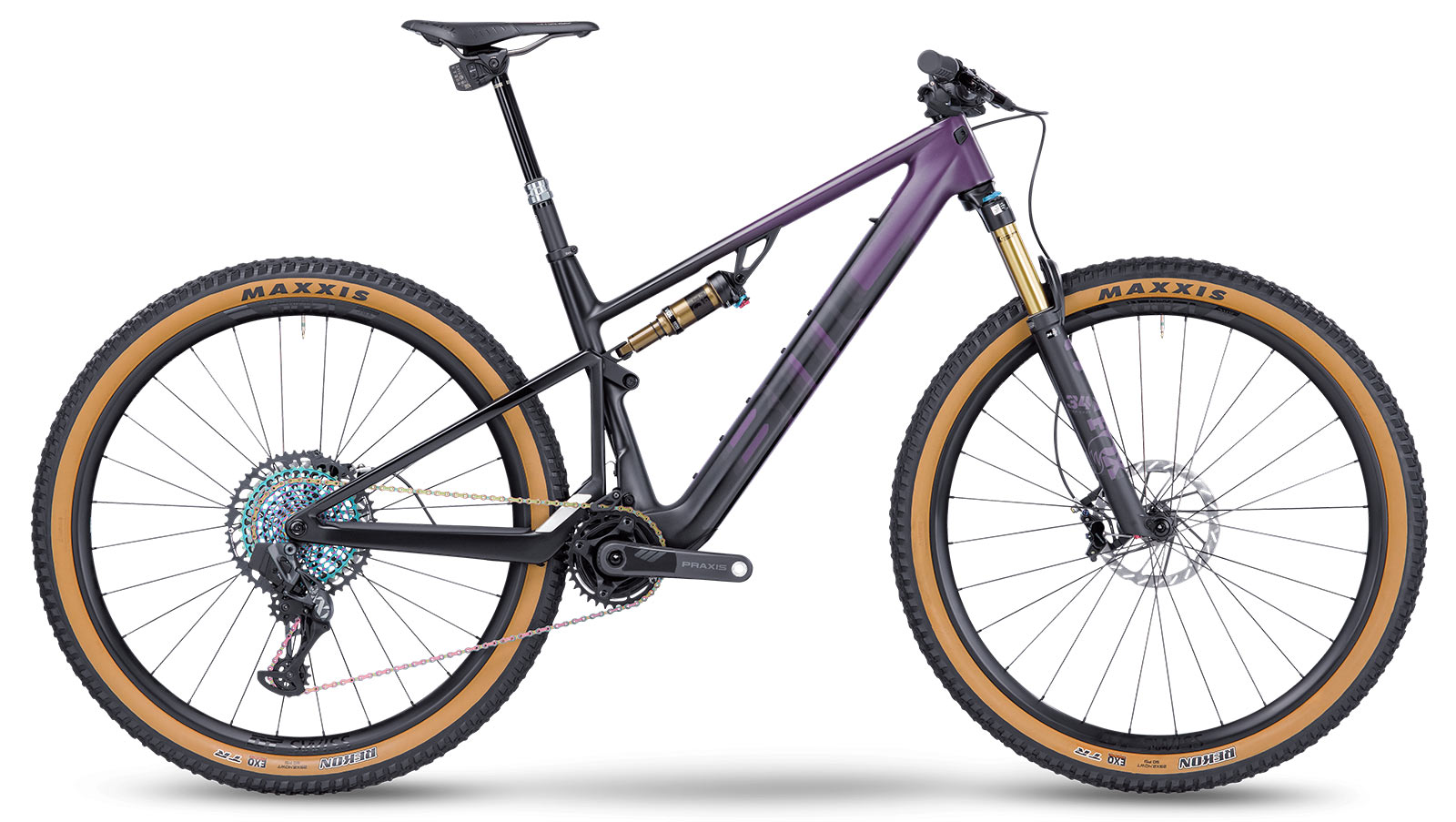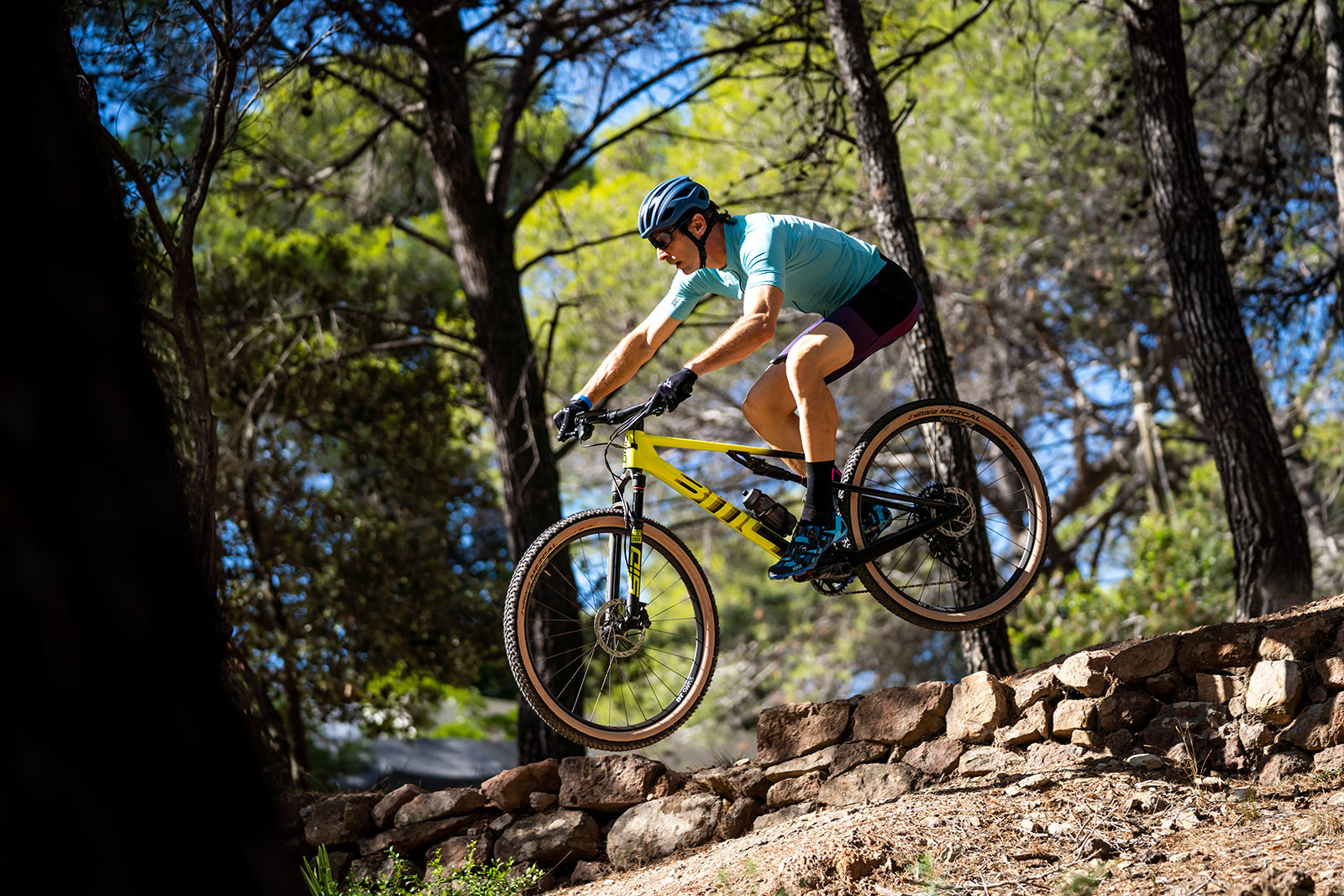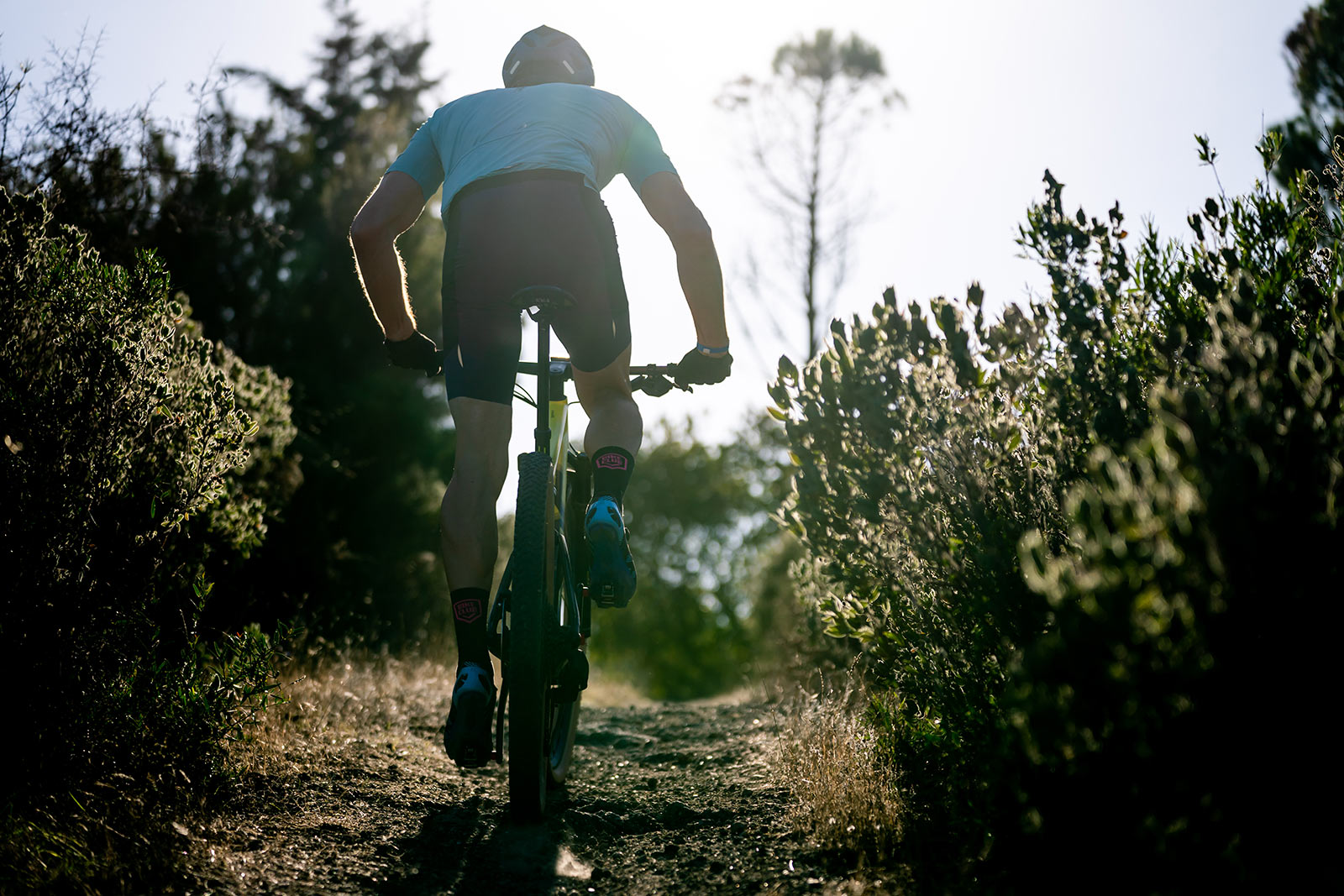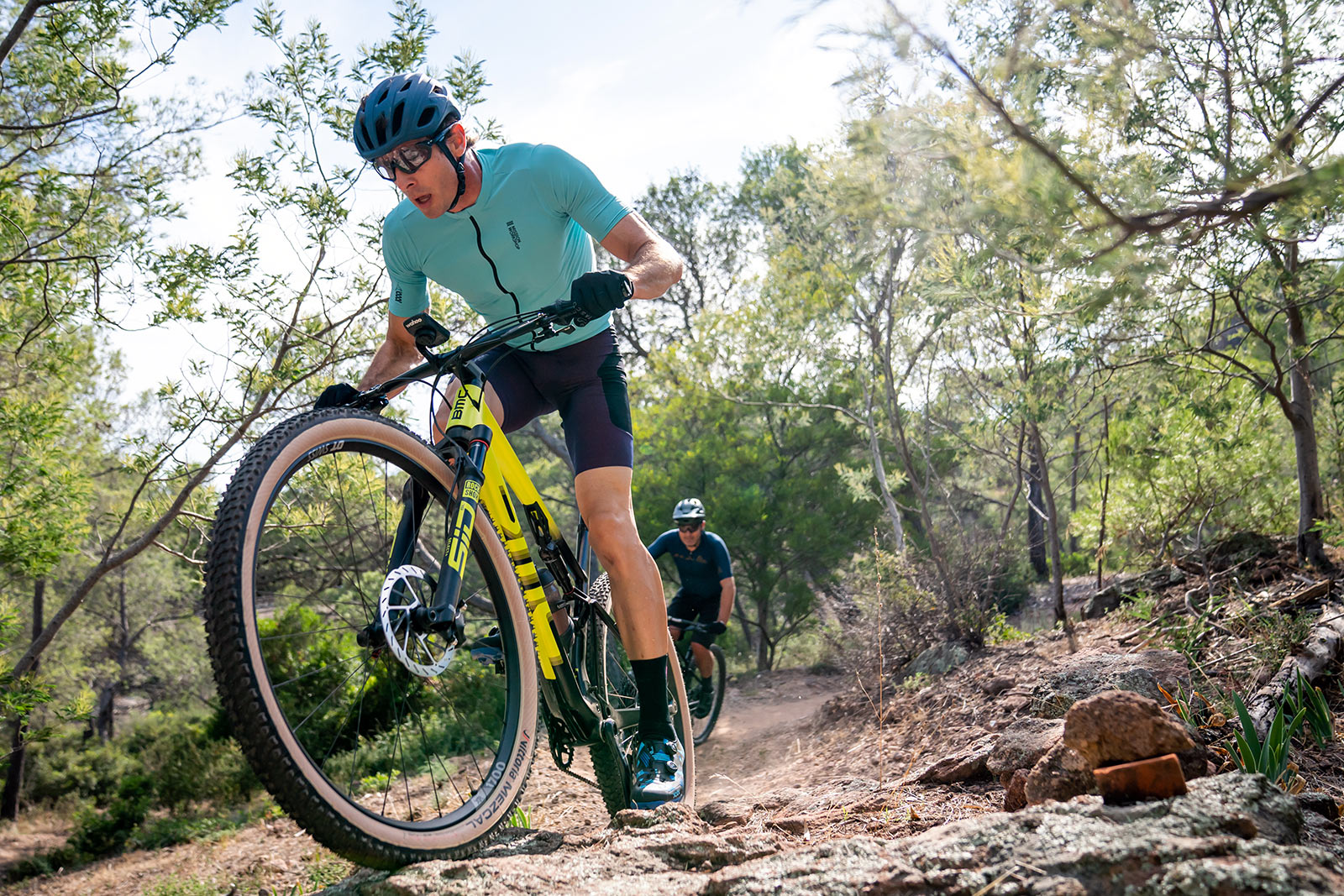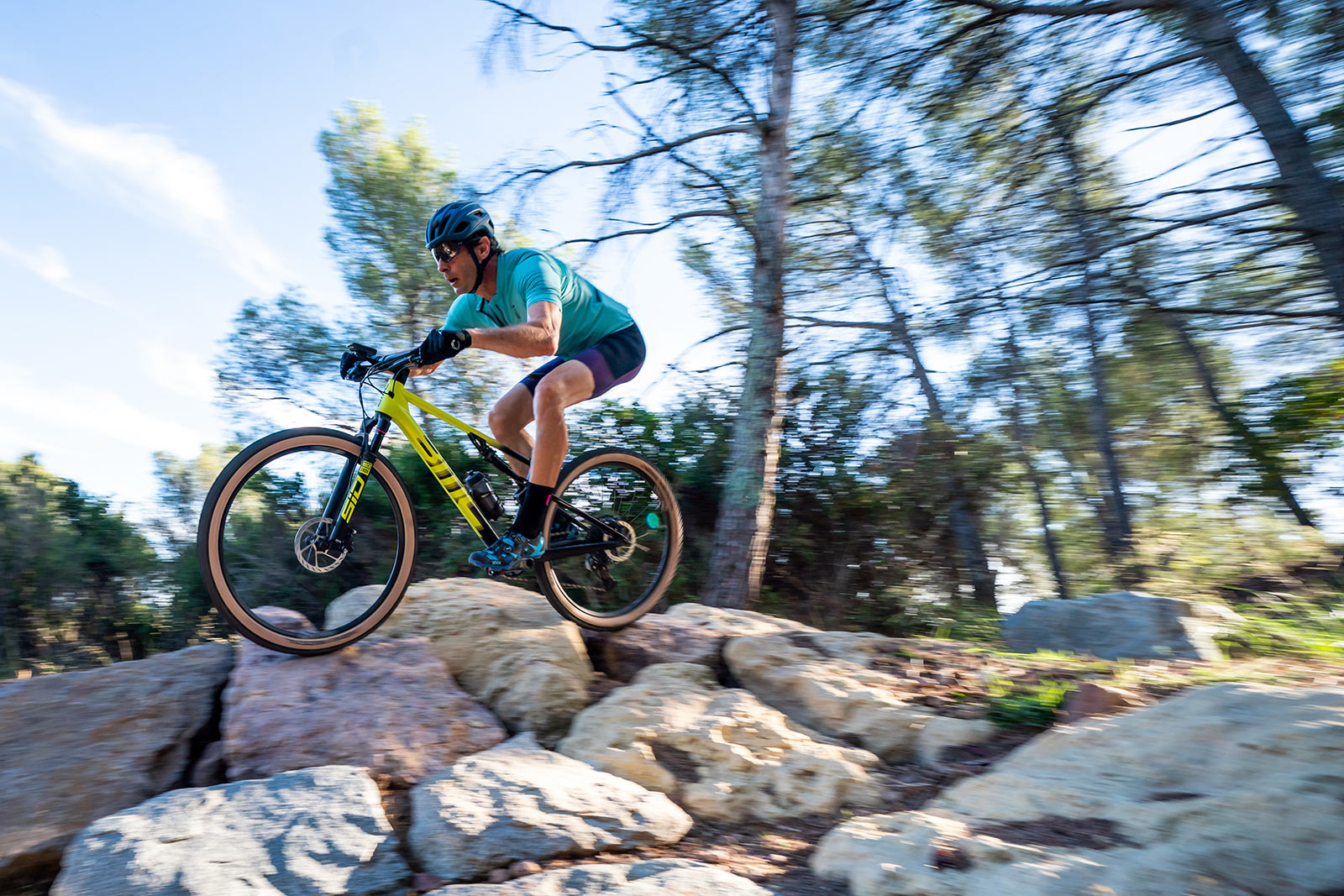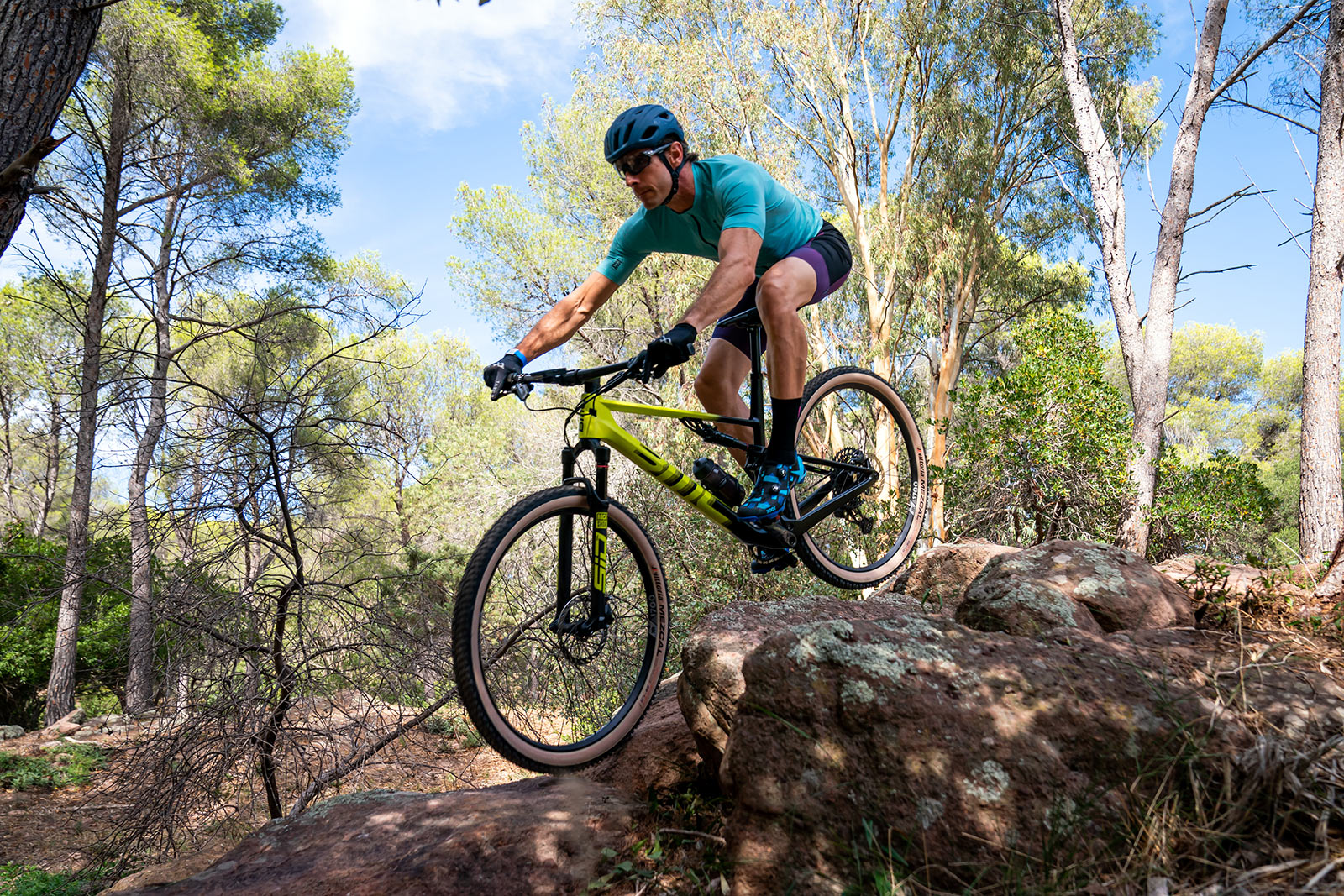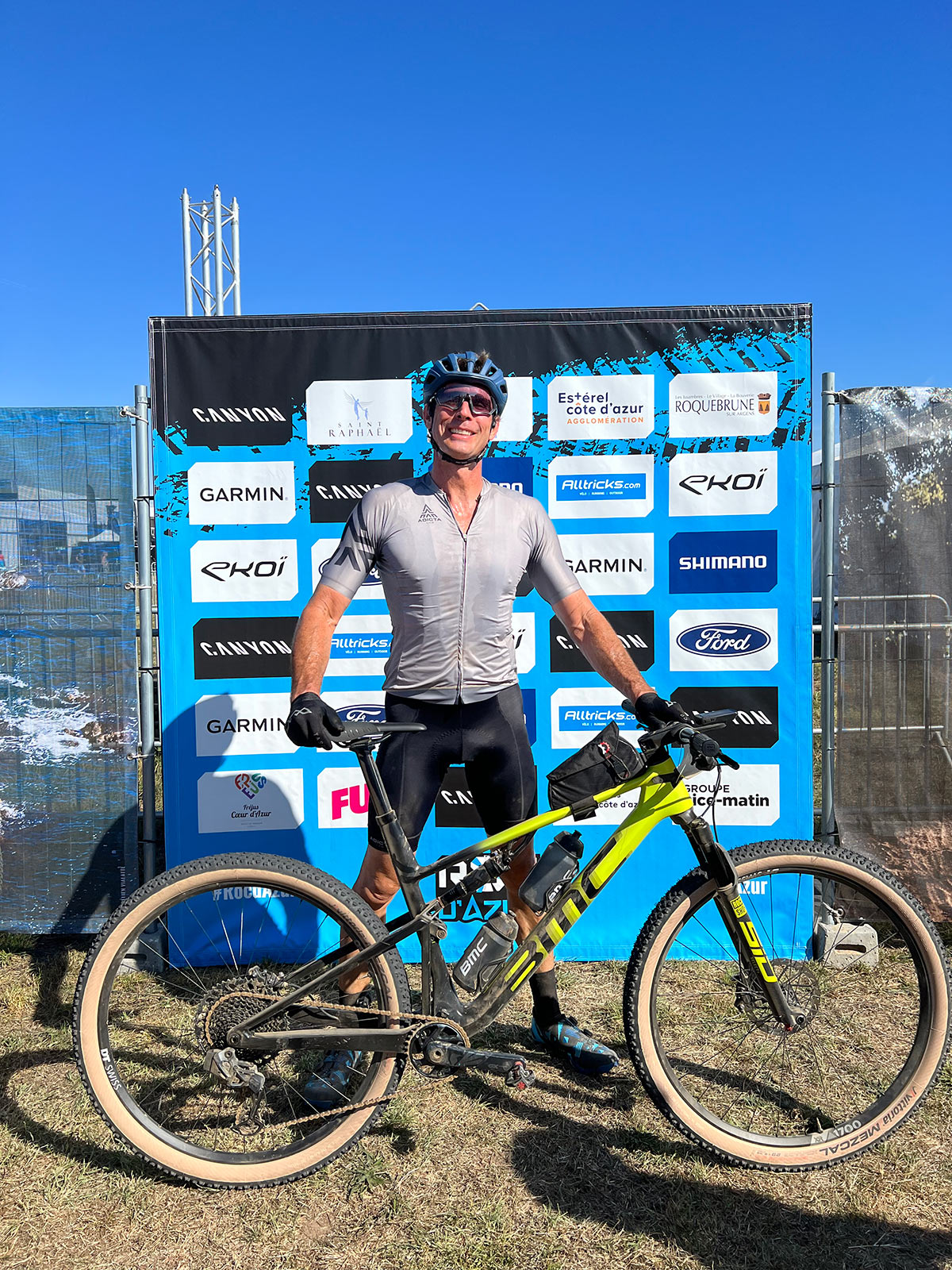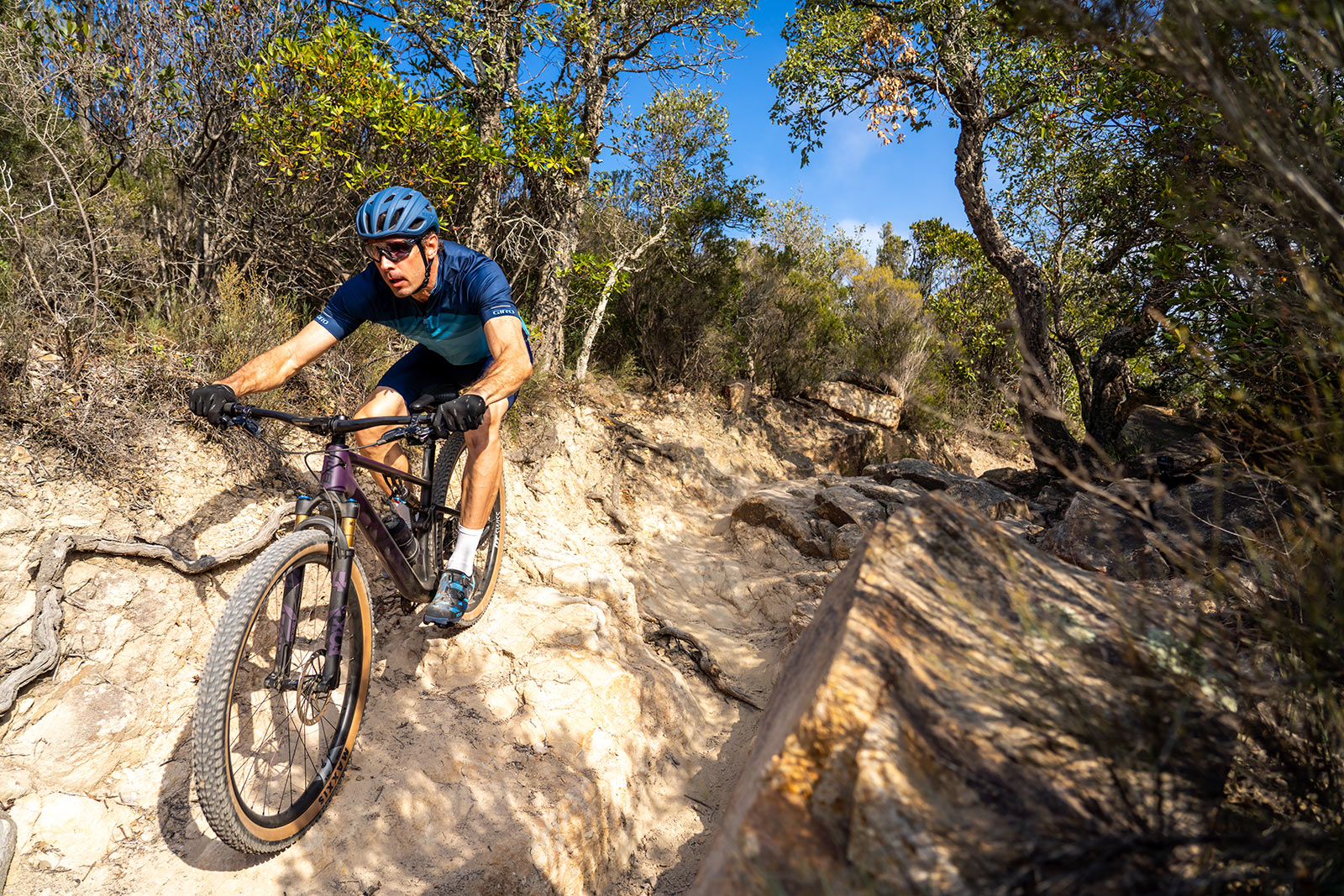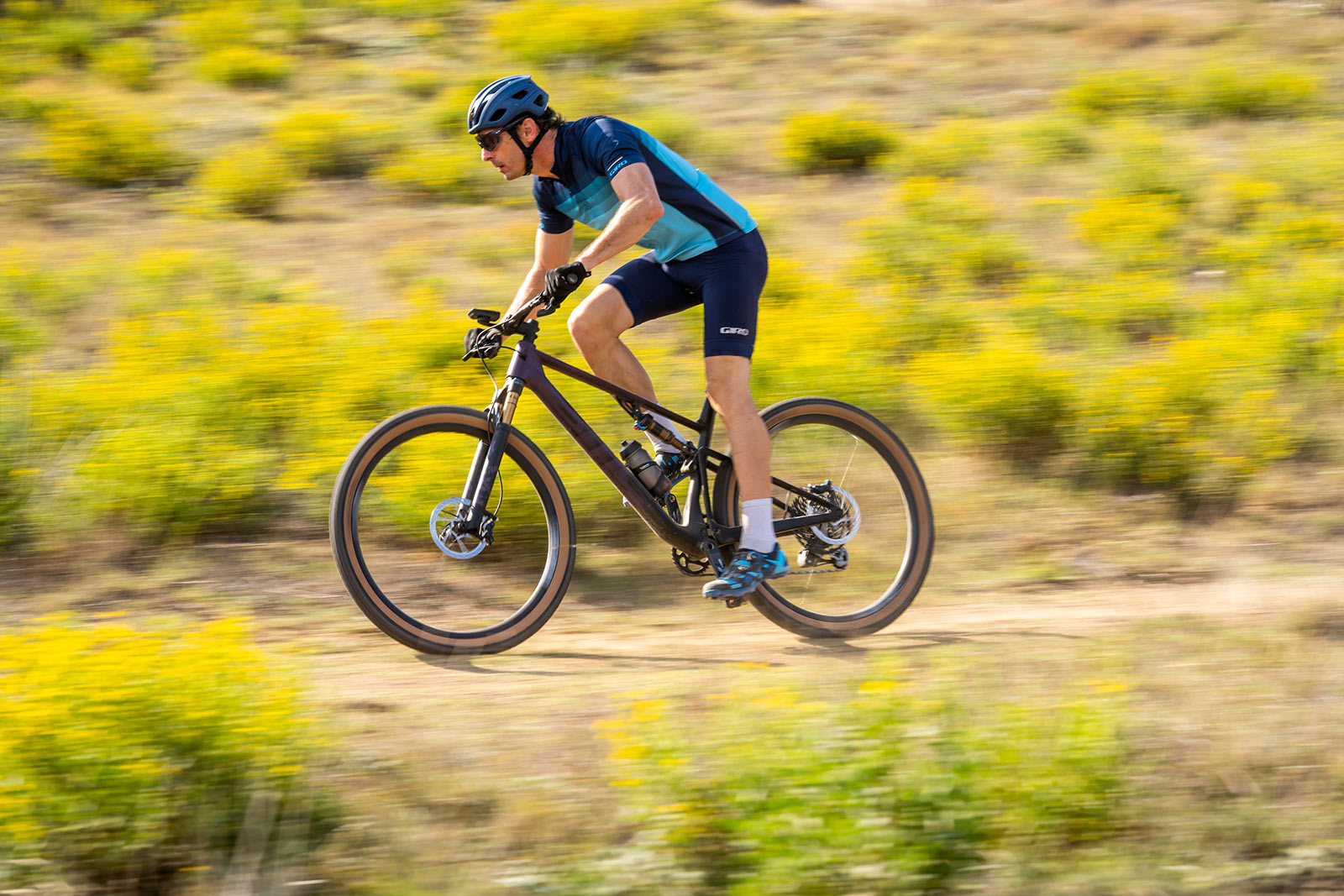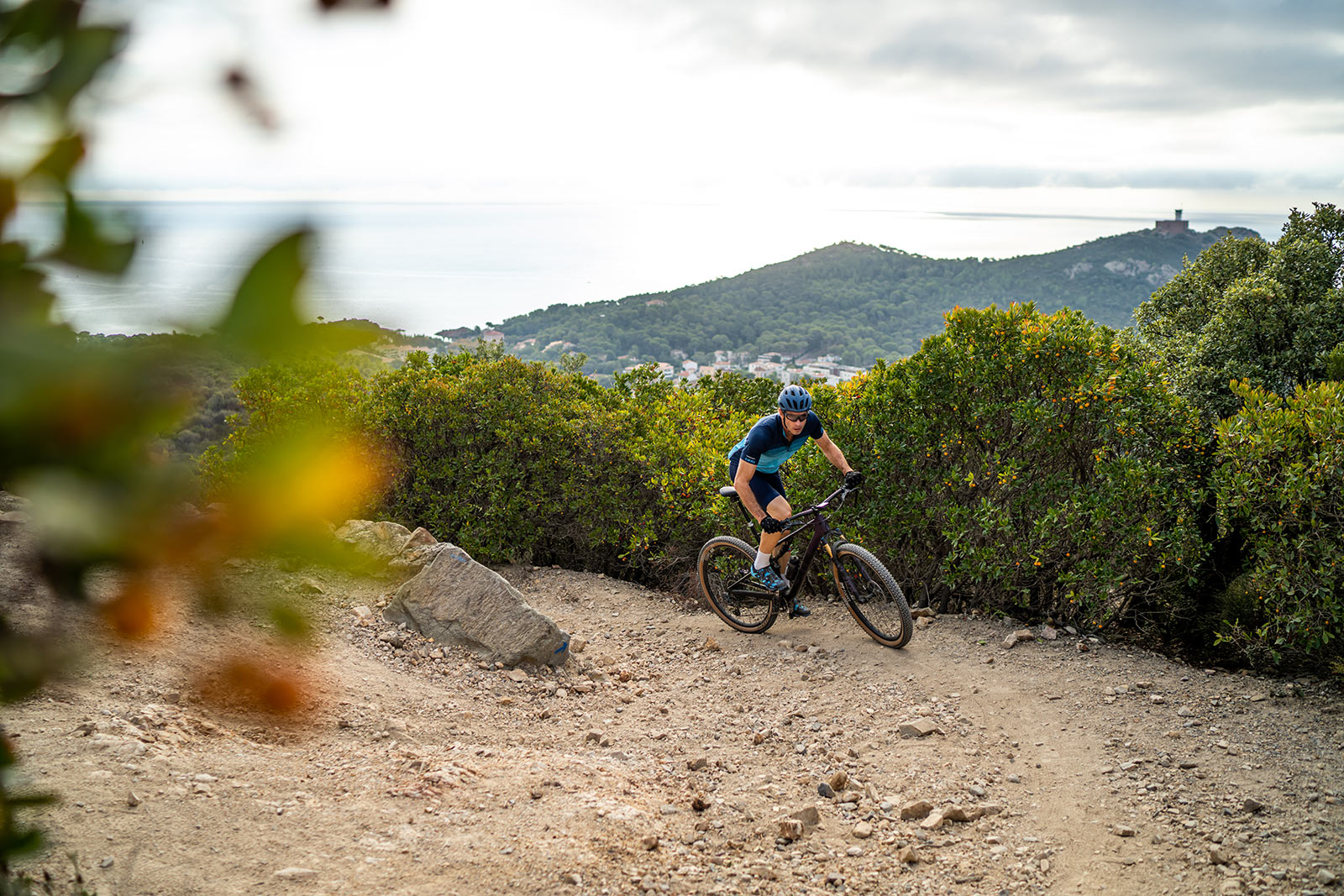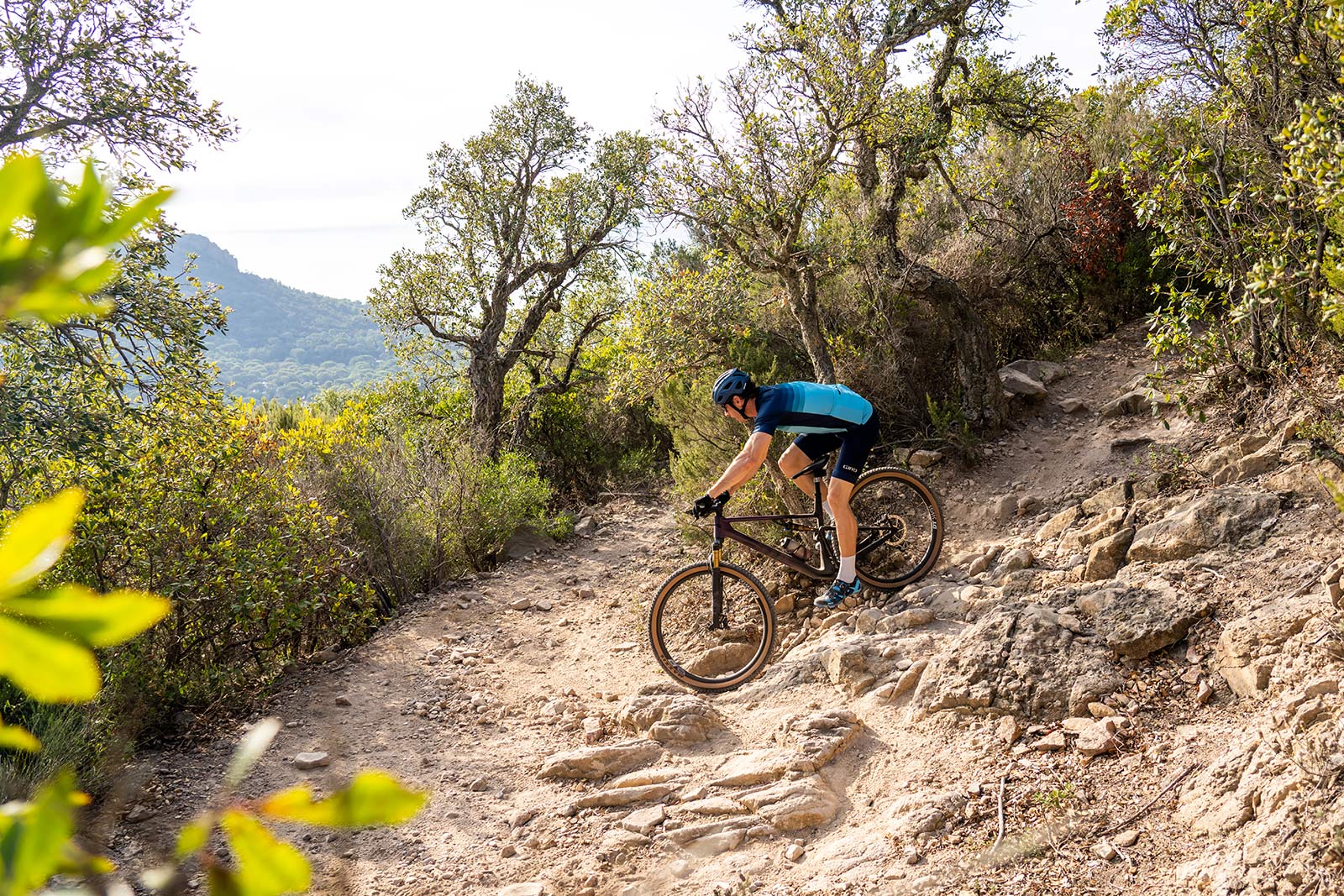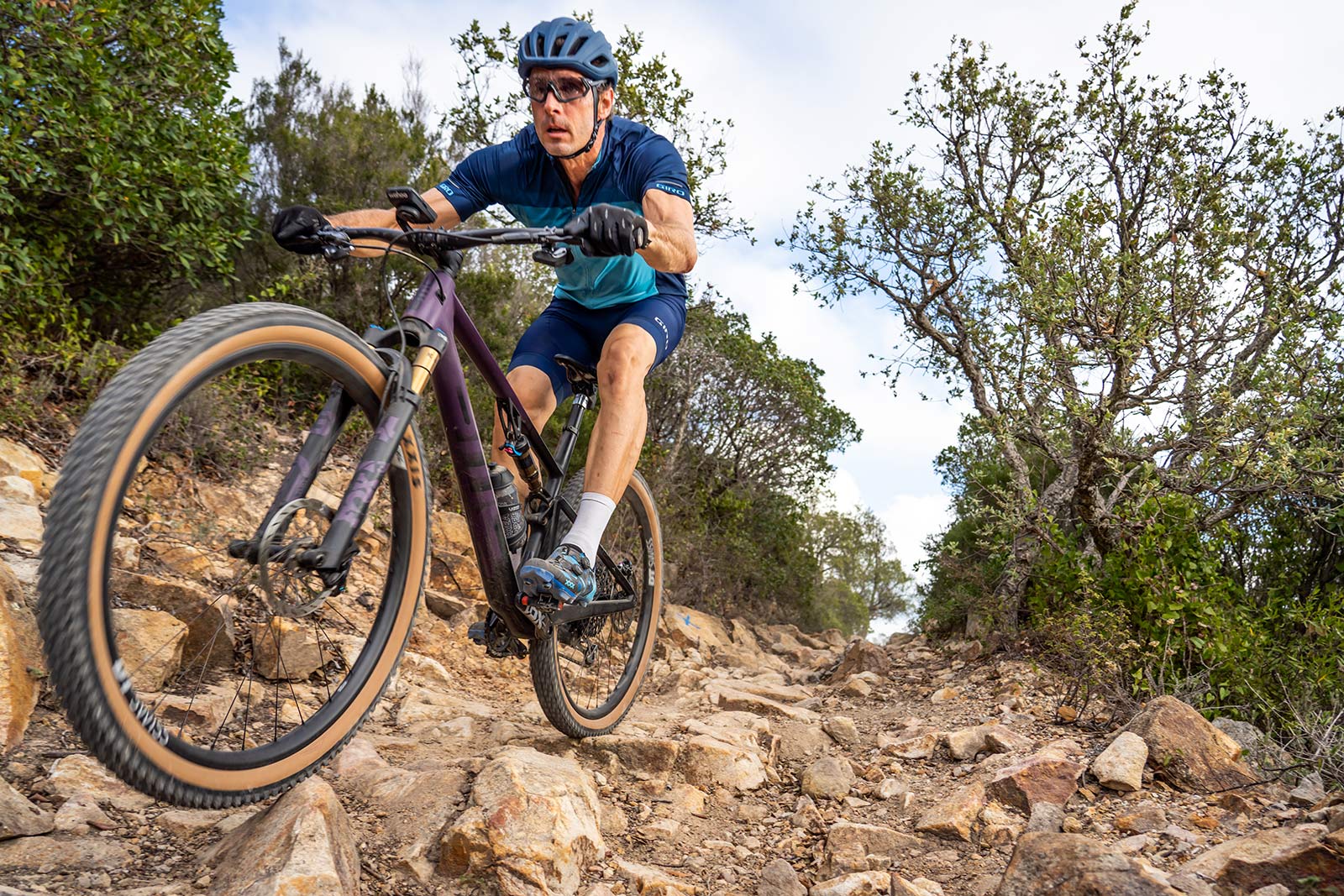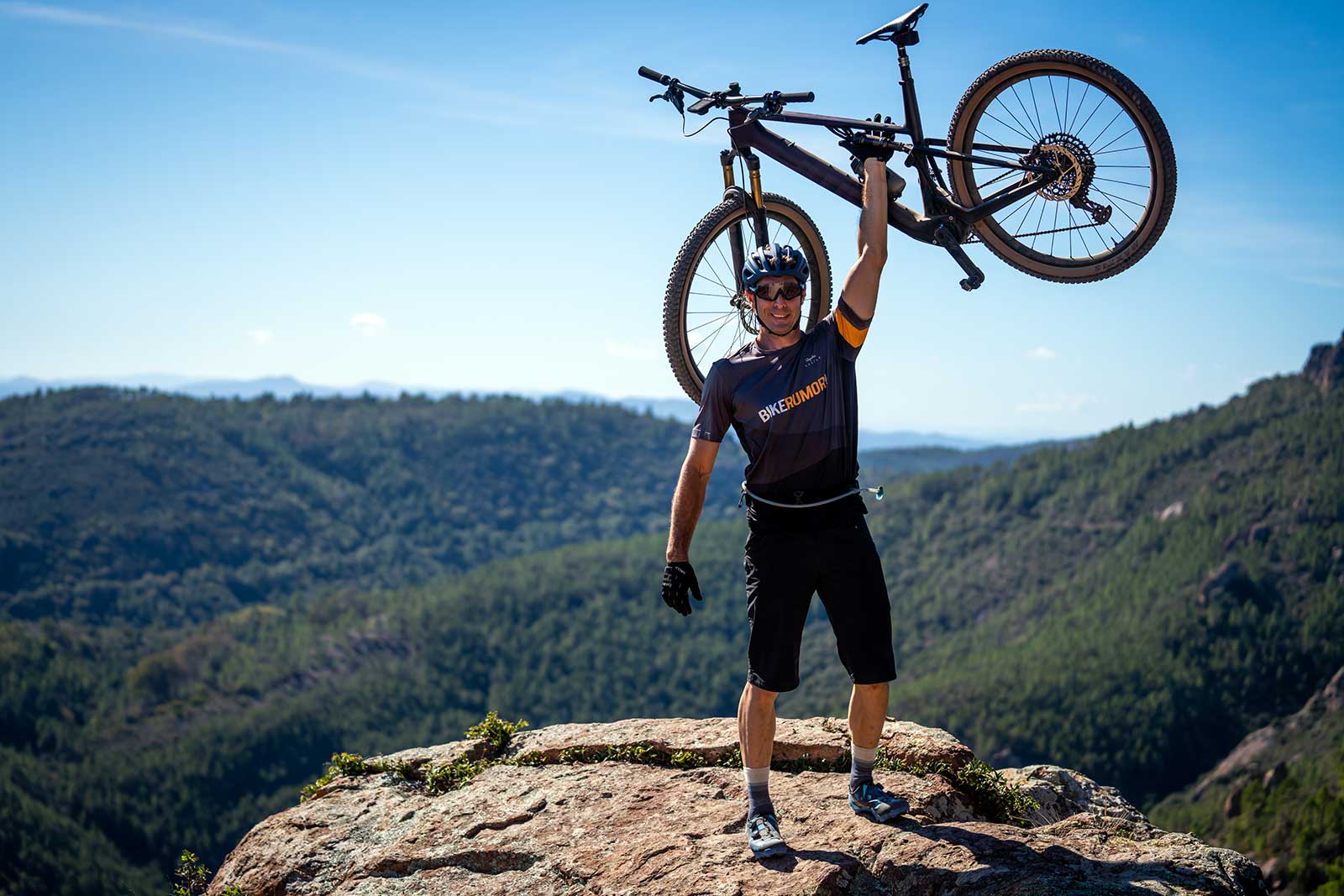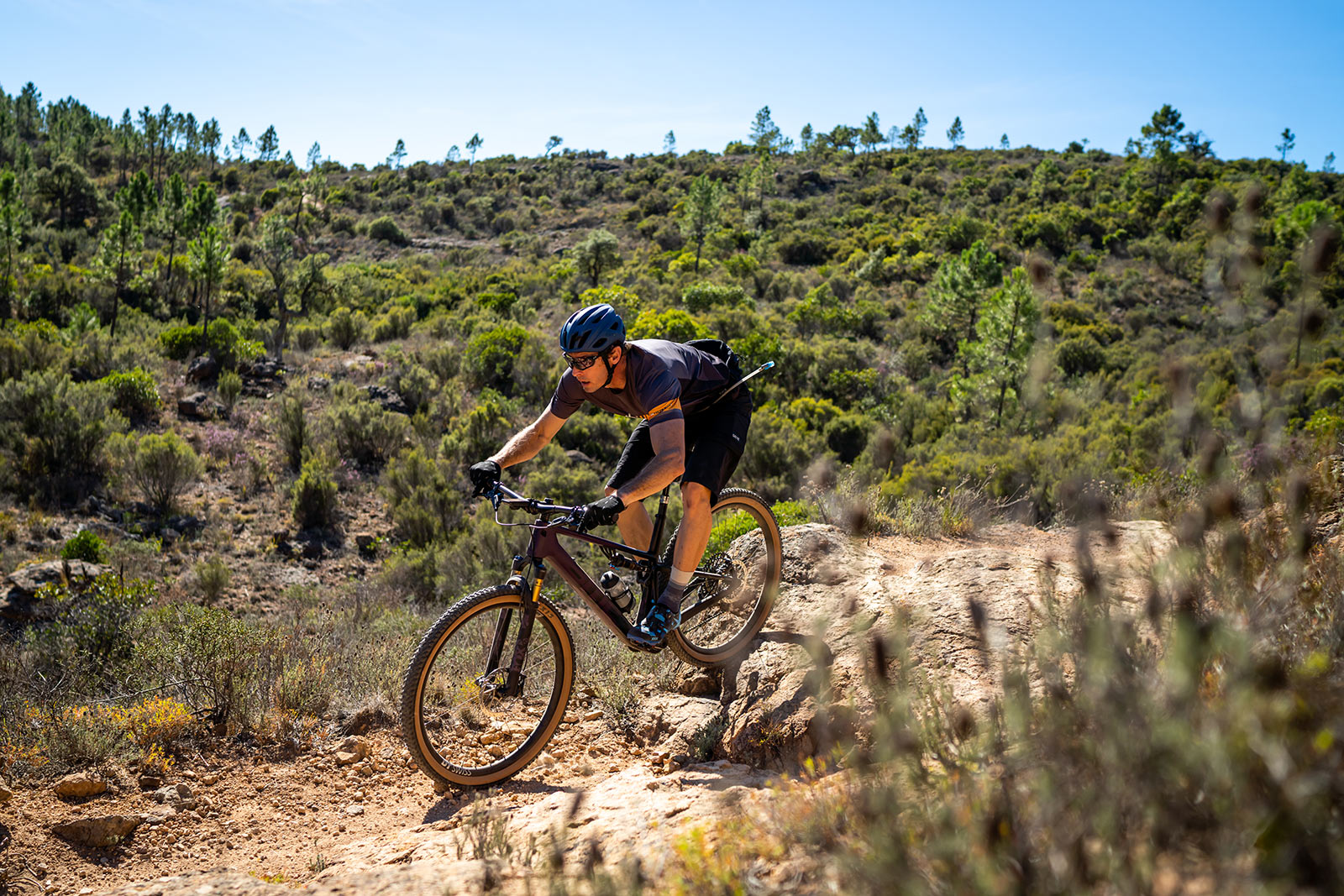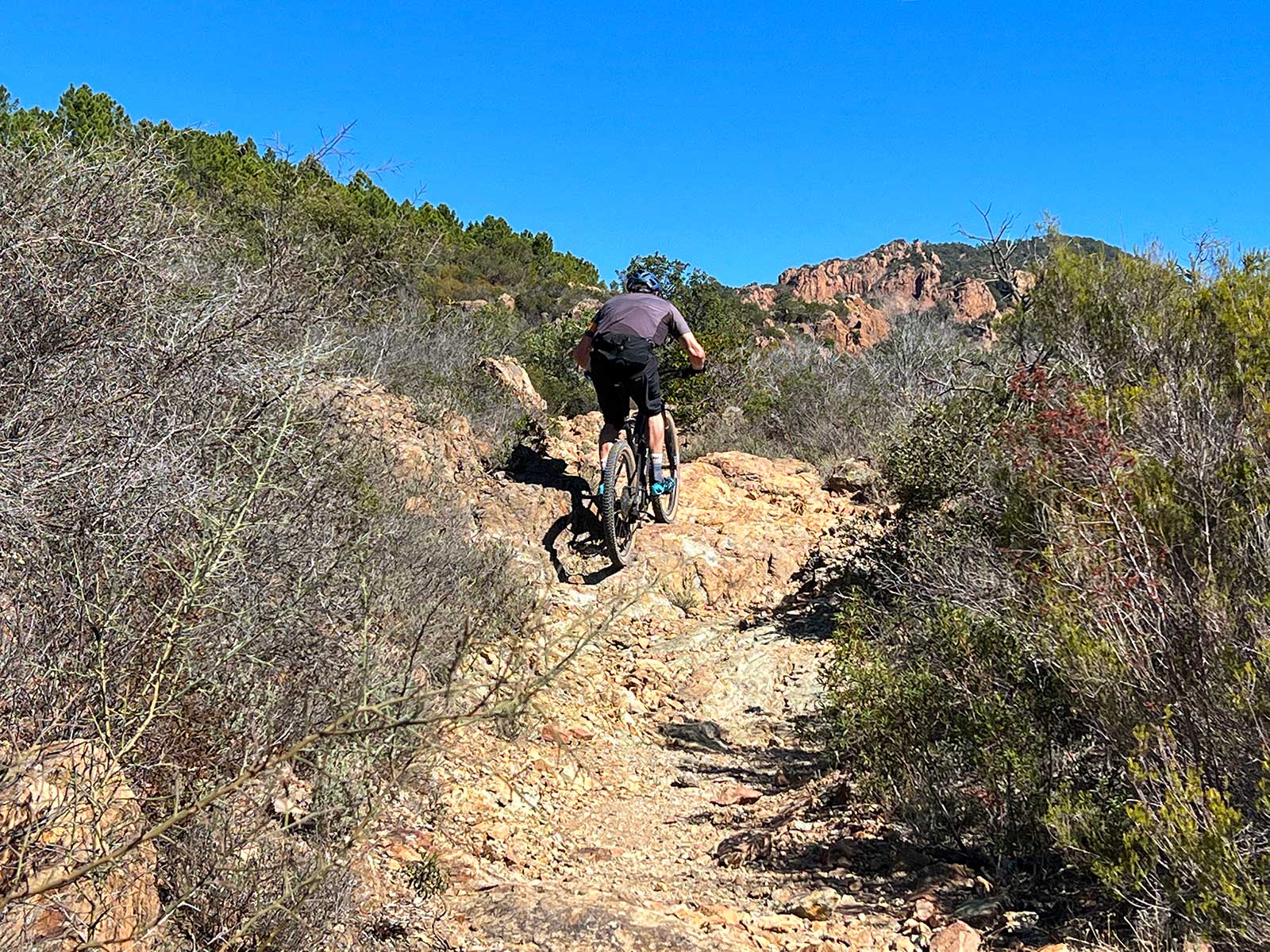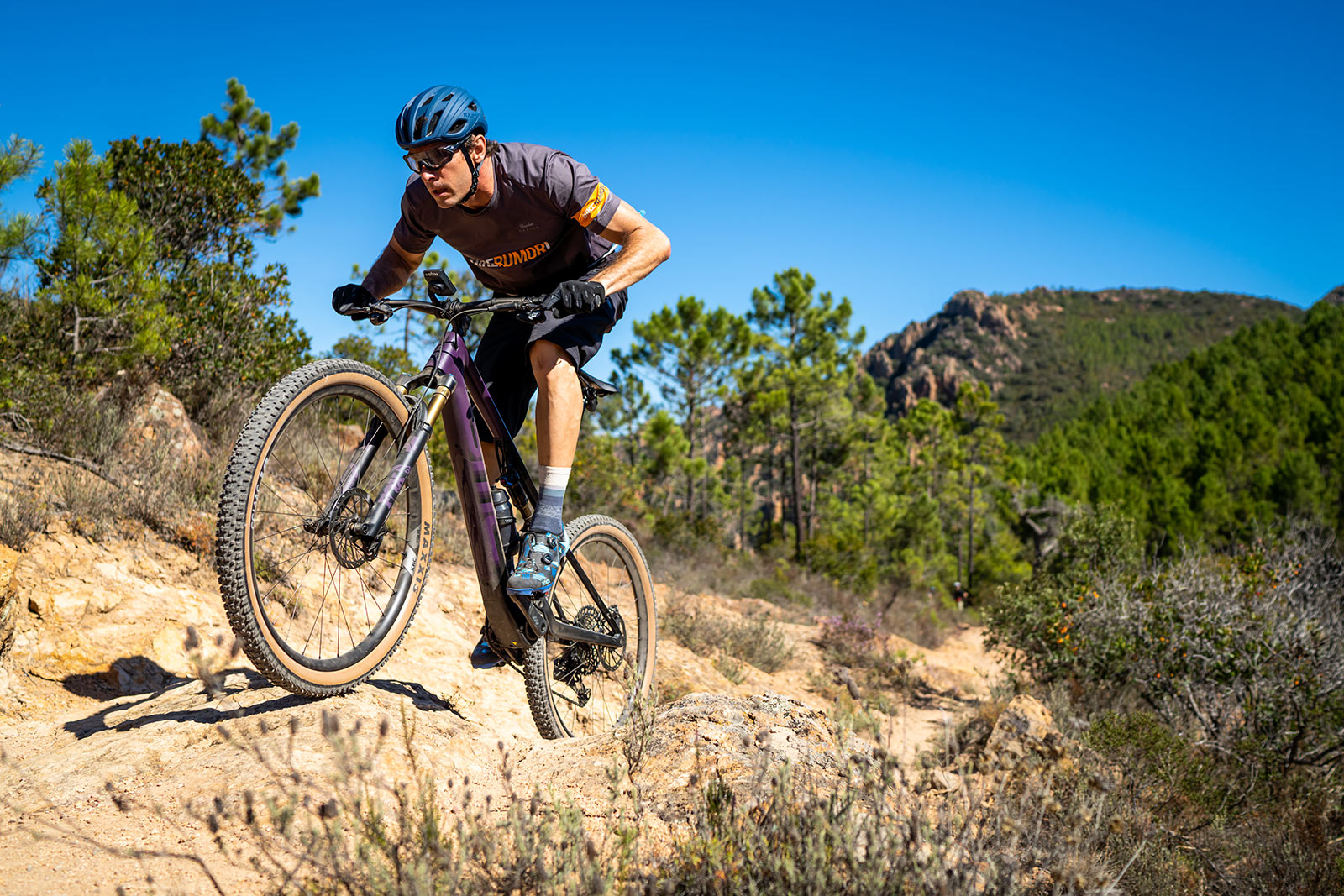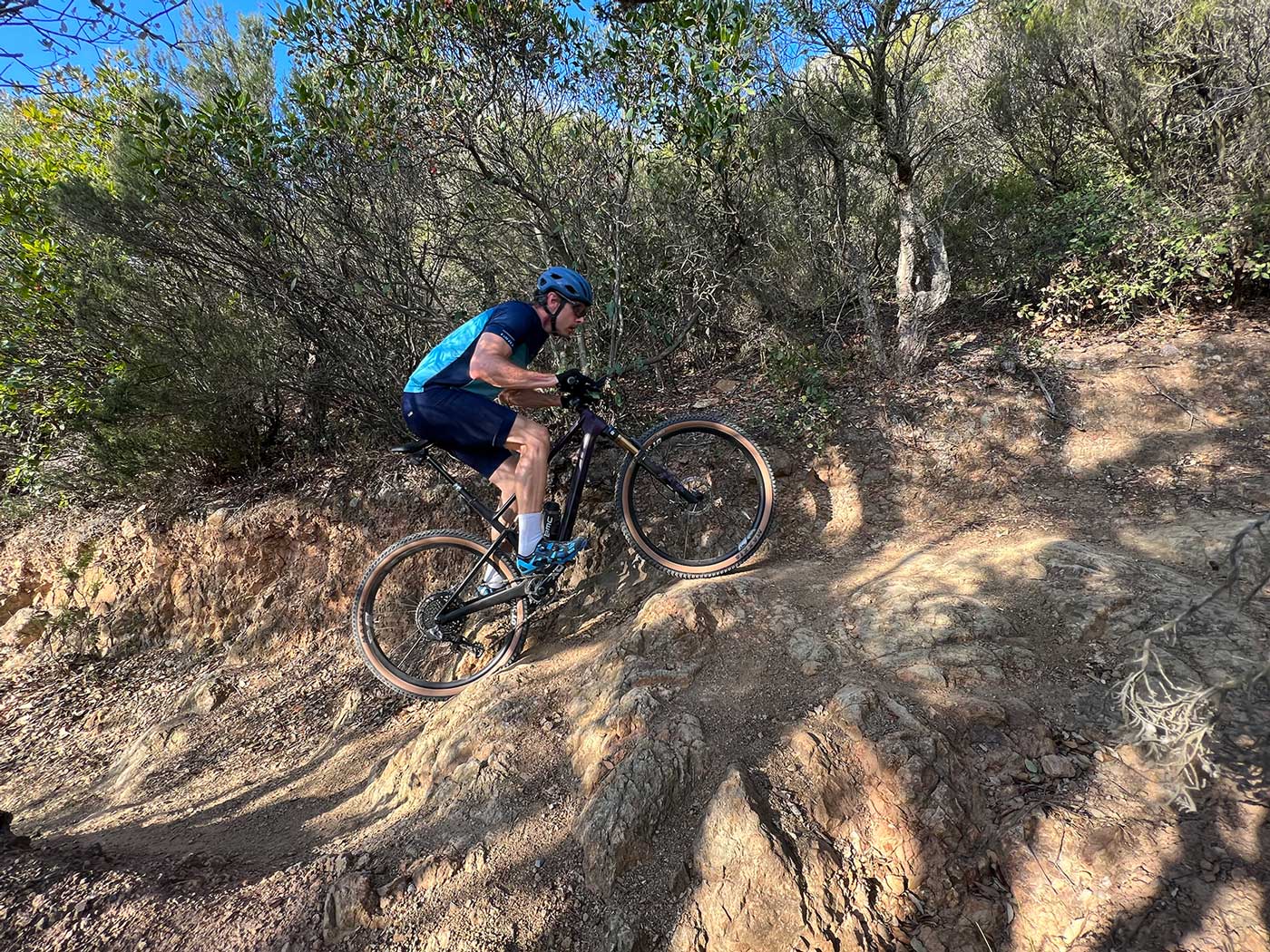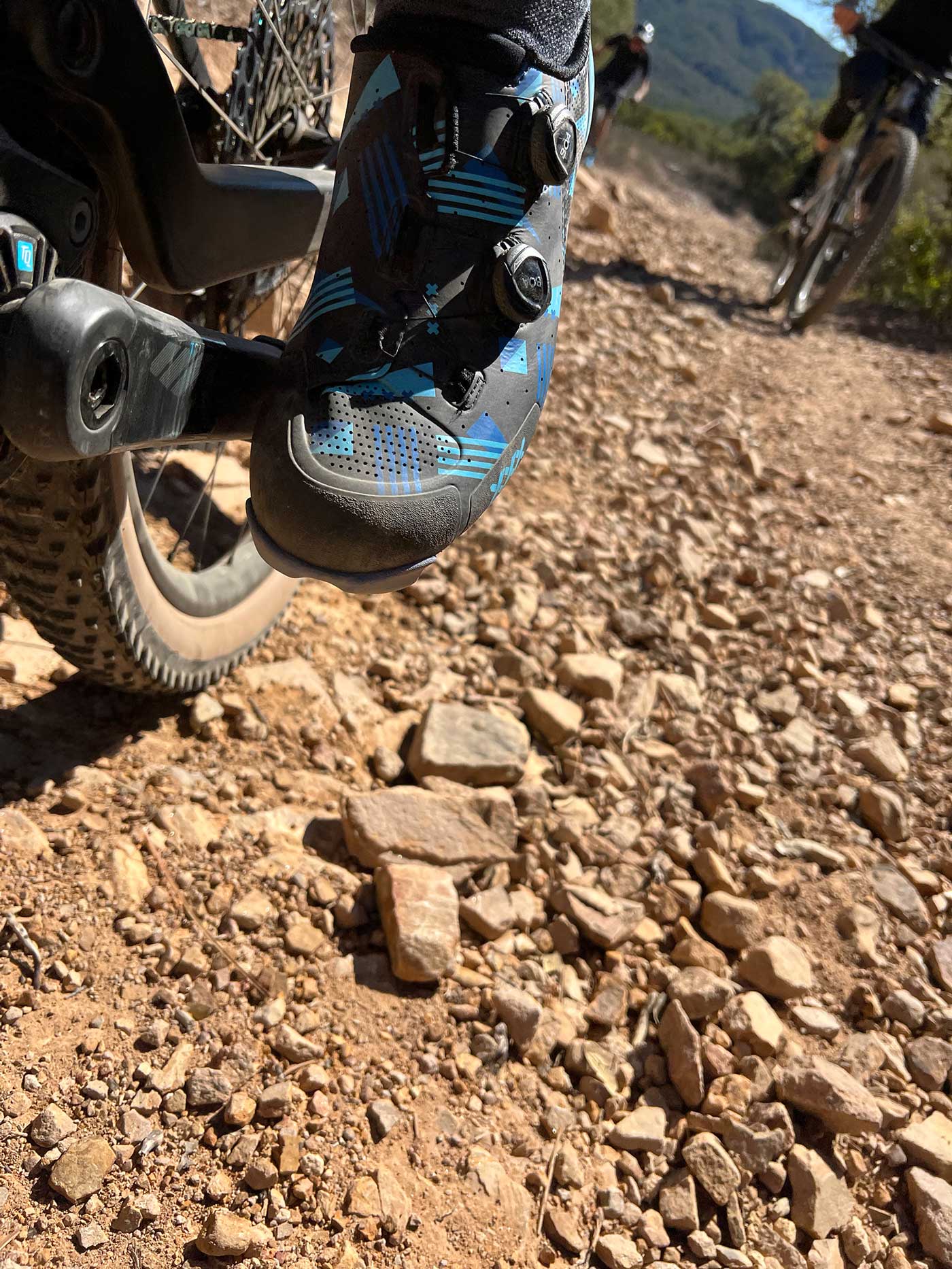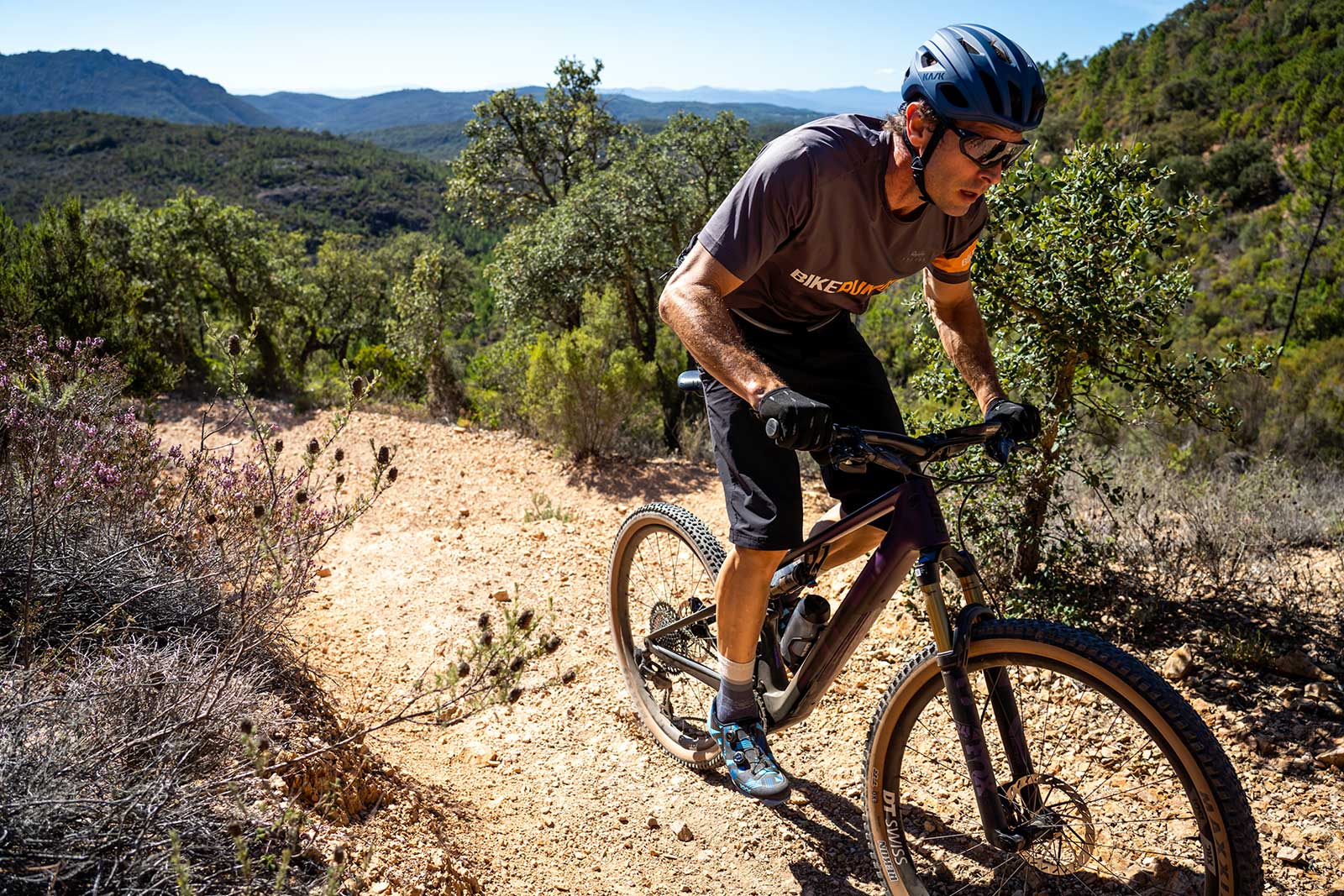BMC recently introduced an entirely new family of Fourstroke XC full suspension bikes, with the headlining Fourstroke 01, the standard Fourstroke, and the “downcountry” Fourstroke LT.
Shortly after, they added the Fourstroke AMP LT, an ultralight motor-assisted eMTB version of the LT. I rode all of them at the launch in France, then raced the 01 in the Roc d’Azur Masters Race for good measure. It was a solid four days of riding, providing a stellar way to experience the bikes and see just what makes each one tick.
Here are my ride reviews for each model, starting with a quick recap of the key differences between them…
BMC Fourstroke Family
The BMC Fourstroke 01 is their top-level race bike and features the amazing new Autodrop seatpost. It has 100mm travel front and rear using their very efficient APS linkage design. Updated geometry give it trail-worthy handling appropriate for today’s aggressive World Cup XCO courses, and Titouan Carod has already ridden his new Fourstroke 01 to a win.
The Autodrop seatpost uses a dual-position lever, acting like a regular dropper seatpost at first. But with a deeper push of the lever, it’ll drop on it’s own, saving precious energy since you don’t have to squat to drop it.
There’s also a standard Fourstroke model that uses slightly lower grade carbon fiber and a standard dropper seatpost, but is otherwise the same. Check the full details of these bikes here.
The Fourstroke LT is simply a longer travel version of the base model, getting 120mm travel front and rear. Geometry is identical, it just sits a little taller, giving it some snappy downcountry vibes. All models max out at 29×2.4″ tires. Full tech details on this model here.
The Fourstroke AMP LT hides the TQ HPR50 drive system in a slim, lightweight frame for a complete bike under 35lbs in top trim. It’s quick, quiet, and performs nearly identically to the analog version. Full tech details on the AMP LT here.
2023 BMC Fourstroke 01 review
We started the week off at the French mountain bike team’s semi-private testing grounds. The course is continually updated to add features mimicking upcoming Olympic XC courses, giving them an edge in training.
The circuit is hard, technical, with lots of power climbs, tricky corners, and surprisingly big drops. Many of the drops and drop-ins are blind, too, much like the Olympic courses.
A great XC bike needs to be able to sprint efficiently, and the 01 does. All 01 models come with remote lockouts, and the Rockshox equipped bikes use their TwistLoc remote, which is definitely the most ergonomically and aesthetically pleasing option.
As usual, I don’t often use a lockout, but the twist-to-lock-and-unlock ease of this remote had me using it during the actual race way more than I thought I would. There are a lot of fire roads and smooth singletrack sections, and it made a noticeable difference in the bike’s personality…it felt more efficient.
That said, BMC’s APS dual linkage suspension is wickedly efficient and grabs the ground under power. Thanks to a bit of anti-squat, it’s a bike that I could grind up the climbs through loose or technical terrain and the rear tire just wanted to eat the ground, yet the suspension kept working over rocks, ruts, whatever.
BMC recommends a generous 30% sag, and the BB is lower than ever. That combo did yield more pedal strikes than normal, but the handling and suspension performance are worth it.
There’s no denying XC bikes have become incredibly capable, but the BMC seemed even a step ahead of that game. I drove it hard into massive man-made rock gardens like you see above, and flew blind into rugged descents on the Roc d’Azur course that had many a competitor walking off to the side.
The Fourstroke 01 took it all in stride, keeping me sailing smoothly through it all. The slack 66.5º head angle certainly helped keep me over the bike (and not over the bars) on some of the steeper stuff, but the bike still felt XC quick when it needed to be.
At first glance, a lot of the features on the French team’s test course would have me wanting a 120/130 trail bike. But the Fourstroke showed its mettle and surprised me with its capability. Honestly, it’s a damn impressive bike in every way.
I appreciate that BMC let me hang around to participate in the Roc. Riding a bike on a media trip is one thing, but putting it through it’s paces in it’s ideal setting is always a better test.
42km in 2:34:52 was a solid effort for me, netting me 199th out of 745 entrants. Zero mechanicals and zero wrecks.
As much as the bike is a standout on its own, the Autodrop seatpost is absolutely phenomenal. It definitely takes a couple rides to remember that it’s there, but the habit forms quickly and the benefits are huge. I can’t overstate how awesome it is to pre-emptively drop the saddle without having to change pedaling cadence or position on the bike.
It was absolutely a big engineering challenge for BMC, which they pulled off while keeping the bike very lightweight…serious kudos there. The only downside is the cost, these bikes are expensive because of all that R&D and tech that had to be developed from the ground up. But that’s BMC…they’re not afraid of making an expensive bike if it means they can make the best bike. And this is definitely one of the best bikes I’ve ridden.
FWIW, I rode the Fourstroke 01 Three, the lowest spec in the 01 lineup, and if it were my money, this is the one I would get. Solid spec, and the alloy wheels are the only thing I’d want to upgrade.
Also, two bottle cages on the downtube? Awesome.
2023 BMC Fourstroke LT review
Take everything that’s good about the 100mm Fourstroke and give it more travel and you have the Fourstroke LT.
It loses the 01’s Autodrop post (and $1,000 off its price tag), but is otherwise the same exact bike, geometry and all.
Which meant I could sprint along the flat stuff and rip through singletrack just as quickly…
…and power up the loose, steep, or loose-and-steep climbs just as efficiently.
But the added travel brought more capability on steeper, rougher descents. The LT comes with 2.4″ tires (versus 2.35″ on the 100mm models), so there’s a bit more cushion and traction there, too.
Think of the Fourstroke LT as the slightly more playful sibling that’s equally skilled, just a bit more comfortable on longer rides and even more capable on technical terrain. BMC errs on the side of slacker, so the same 66.5º head angle works just as well here with the 120mm travel, and it’s on par even with many competitors’ bikes using 130mm forks.
BMC is aiming it at the marathon and stage-race crowd, and unless you’ve been personally invited to gun for the top spots at such events, the extra travel is probably worth the slight weight penalty (after all, it’s only the fork and tires that are really any bigger).
I’d like to see BMC selling the upper linkage separately so we could convert between 100mm and 120mm rear travel, then just switch the fork…or not, creating a 120/100 ripper.
BMC Fourstroke AMP LT review
At just 15.9kg (~35lbs), the BMC Fourstroke AMP LT is comically light for an e-bike. Not just an eMTB, but any e-bike.
They do this by using the TQ HPR50 system, a 50Nm motor that, all in with battery, cables, remote, and display, barely adds 9lbs (3.9kg) to the bike. And BMC keeps the same spec as on the regular LT; nothing here is beefed up for eMTB use. The bike is so light it doesn’t have to be.
The nice thing about this, other than it being really light, which is awesome on its own, is that it looks, rides, and feels like a regular bike.
In fact, I felt more “in” the bike on the AMP LT, versus “on” the bike with the regular LT. Which makes sense – the AMP LT has a 37mm lower standover height and 2mm lower BB drop. Despite having a slightly taller stack height, I felt lower on the AMP than on the standard LT.
Both felt good and handled fine, but riding the LT after being on the AMP the day prior felt a little tall at first. Which is to say, the AMP LT really does feel low and stable and fast, just like the others.
Except that it makes climbs like this fun. The TQ system delivers just enough power to peacefully nudge you up techy climbs without the unsettling burst that stronger motors can deliver.
Climbs like these (any climb, really) are still work, and 50Nm of torque is enough to make them range from fun to tolerable (as opposed to tough to “f*%k it, I’m walking”).
It’s enough boost to power through those undulating sections that can really tax your quads, alternating between standing and sitting every couple seconds. Power delivery remained smooth and predictable, with a perfectly ramped onset of power at the beginning.
The natural power delivery is especially helpful on steep, punchy sections like that that inevitably sit directly around a super tight switch back, mocking me. And the Fourstroke’s strong XC genes show off their climbing prowess, combining with the motor’s assistance to make me look and feel like a rockstar.
Also worth noting is it’s ability to maintain traction on loose climbs. Those same XC genes combine with just-enough power output to keep the bike pushing forward without spinning out.
The TQ motor’s jumps between Low, Medium, and High modes are smooth and subtle. They’re noticeable, as in, there’s a clear difference between them that’s especially noticeable on climbs, but they’re not so dramatic that they threw off my rhythm. Which, on a loose climb like this, is critical to maintaining forward momentum and traction.
The Fourstroke AMP LT begs the same question as other bikes using this mid-powered motor… why? Why not go bigger?
The easy answer here is weight. The AMP LT would almost feel just like a regular bike if I ran out the battery. I could easily pedal this home under my own power. But, with an available Range Extender battery pack boosting total available energy to 520Wh, it’s unlikely I’d have to.
And the low weight makes the handling feel familiar, too. Plus, it’s quiet, so it sounds like, well, nothing. So I can hear nature. Or just hear the bike working, my heart pounding, or the conversation with friends as we roll up fire roads. Nothing about this bike is competing with my ambiance.
Big, powerful e-mountain bikes have their place; they’re an absolute blast at bike parks and in big mountains. But light bikes are fun, too, and most of my riding is on trails where anything bigger, longer, or more powerful than this would be overkill. Horses for courses… if you want a very fast feeling, capable bike that’s surprisingly light for what it can do, the BMC Fourstroke AMP LT is worth a look.
